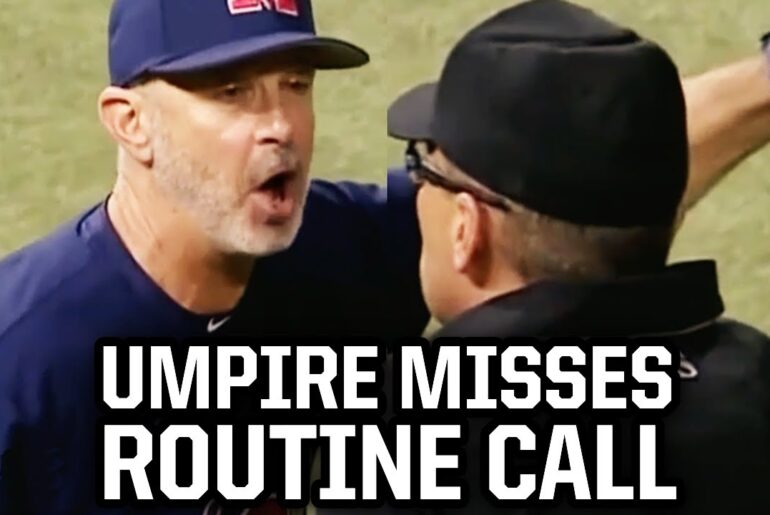As the game commenced, Zach Gallon took his place on the pitcher’s mound, ready to face Manny with two outs in the first inning. Gallon’s fastball sailed wide, far away from the strike zone, but to everyone’s surprise, Manny didn’t leave the batter’s box. He stood still, while a woman behind him washed her hands, seemingly engaged in her own business.
The Countdown
The spectators settled into their seats, basking in the warm sun, as the game’s pitch clock began its countdown. With five seconds on the clock, Gallon delivered another fastball, this time towards the outside of the plate. Manny appeared dissatisfied with the call but acknowledged it as a well-placed pitch. The count stood at 2-0.
Mixing It Up
Aware of the need to vary his pitches, Gallon aimed to regain control of the count. However, to everyone’s surprise, he opted for yet another fastball, missing his target once again. This marked the third consecutive fastball in a row. Now, the count stood at 3-1, and Manny could sense an opportunity.
A Breaker in the Mix
Eager to capitalize on the favorable count, Manny prepared himself for the next pitch. The pitch clock continued its countdown, reaching the critical moment. Just as the clock struck eight seconds, Gallon unleashed a well-executed curveball. The unexpected pitch, given the fastball count, served as an effective distraction. Manny swung mightily, hoping to connect with the pitch.
A Misunderstanding Unfolds
Rather than stepping out of the batter’s box, as is customary in such situations, Manny remained in place. The confusion arose from his misinterpretation of the pitch clock rules. According to the rules, a batter must be prepared and ready to hit before the eight-second mark. Manny, however, believed he could call a timeout during the eight-second mark.
The Umpire’s Intervention
Manny’s misunderstanding led to a prolonged delay in the game. The umpire, equipped with a bracelet that alerted him when the eight-second mark arrived, felt a subtle buzz and glanced up. Observing Manny’s failure to be ready within the designated time, the umpire signaled for the game to proceed, indicating that Manny had not been prepared.
Friction and Ejection
Manny, frustrated by the umpire’s decision, insisted that he had called timeout on time. The umpire, unswayed by Manny’s argument, reprimanded him for not adhering to the rules. Tensions escalated as Manny, growing increasingly irate, directed profanities towards the umpire. The manager of Manny’s team intervened, but the umpire stood firm in his decision. With no other recourse, the umpire ejected Manny from the game, citing his disrespectful behavior.
The Aftermath
The incident left both teams and spectators frustrated by the unnecessary delay and subsequent ejection. Despite the manager’s plea, the umpire maintained that Manny’s derogatory comments left him no choice but to remove him from the game. It was a regrettable situation that could have been avoided with a better understanding of the pitch clock rule.
Conclusion
In the world of sports, misunderstandings can lead to unforeseen consequences. Manny’s confusion regarding the pitch clock rule resulted in a frustrating incident that ultimately led to his ejection from the game. This tale serves as a reminder to players, coaches, and fans alike that a clear understanding of the rules is essential for smooth and fair gameplay. Let us hope that this incident serves as a lesson for all involved and contributes to a better-informed baseball community.



